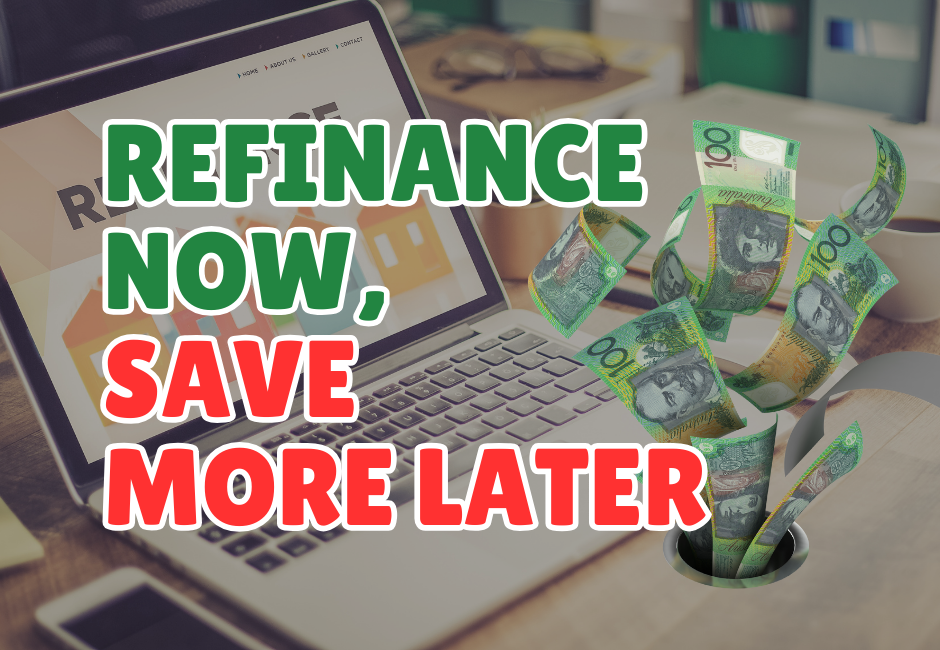
Refinancing Your Investment Property: When Do the Numbers Stack Up?
If you own an investment property, you’ve probably come across the topic of refinancing. But like many investors, you might wonder if it’s really worth the effort or only something for those with big portfolios. The reality is, refinancing can be one of the most effective and straightforward strategies to cut costs, improve cash flow, and unlock equity for growing your property portfolio.
In this guide, we’ll cover:
- What refinancing is and why it matters for investors
- How much you can potentially save
- The true costs involved
- How to calculate if refinancing is the right move
- Real-world examples from investors who’ve made it work
You’ll also find a clear glossary of key terms and a practical checklist to help you assess whether refinancing fits into your investment strategy.
What Is Refinancing—And Why Does It Matter?
Refinancing simply means replacing your existing home loan with a new one—either through your current lender or by switching to a new one offering better terms.
For property investors, loans are often the biggest ongoing expense. Reducing that cost can strengthen returns and improve long-term outcomes. Here’s why savvy investors often refinance:
- To secure a lower interest rate, reducing repayments
- To access equity for additional property purchases
- To consolidate debts like personal loans or credit cards into the mortgage
- To gain better loan features such as an offset account or redraw facility
- To boost cash flow and make holding properties more manageable
How Much Can You Save by Refinancing?
If you’ve held your loan for a few years without reviewing it, refinancing can generate meaningful savings.
Example:
- Loan amount: AUD 600,000
- Current interest rate: 6.59% p.a.
- Refinanced rate: 5.89% p.a.
Annual interest savings:
- Old loan: AUD 39,540/year
- New loan: AUD 35,340/year
- Annual savings: AUD 4,200
Over five years, that’s AUD 21,000 saved—simply from refinancing.
Monthly repayment difference (interest-only loan):
- Old loan: AUD 3,295/month
- New loan: AUD 2,945/month
- Monthly savings: AUD 350
With that extra cash, you could fund another deposit, renovate to increase rental yield, or boost your offset account.
What Are the Costs of Refinancing?
Refinancing involves some upfront costs, but in many cases, these are outweighed by the long-term savings.
Typical costs include:
- Discharge fee: AUD 150–400 to close your old loan
- Mortgage registration fee: AUD 100–400 depending on your state
- Application fee: AUD 300–600 (some lenders waive this for refinancers)
- Valuation fee: AUD 300–500 to assess your property’s value
- Lender’s Mortgage Insurance (LMI): May apply if your loan exceeds 80% of the property’s value
How to Calculate If Refinancing Makes Sense
Work out the break-even point—the time it takes for monthly savings to cover the upfront costs.
Break-even formula:
Break-even point = Total refinancing costs ÷ Monthly savings
Example:
- Refinancing costs: AUD 2,500
- Monthly savings: AUD 350
- Break-even: 2,500 ÷ 350 = 7.1 months
If you plan to hold the property beyond seven months, refinancing likely puts you ahead.
Real-Life Examples from Australian Investors
Ben and Sophie (Brisbane)
They refinanced after their property value rose from AUD 550,000 to AUD 750,000, unlocking AUD 120,000 in equity. This became the deposit for a second property. They also cut their interest rate from 6.59% to 6.29%, saving AUD 1,320 per year.
Michael (Adelaide)
Faced with rising rates, Michael refinanced from 6.75% to 6.29%, reducing repayments by AUD 160 per month. Adding an offset account gave him even more savings, helping him build a buffer for his next purchase.
Rachel (Perth)
Rachel refinanced and rolled AUD 35,000 of personal debt into her mortgage at 6.59%. The move cut her monthly repayments by AUD 700, freeing up cash for maintenance and future investments.
Glossary of Refinancing Terms
| Term | Definition |
| Refinancing | Replacing your existing loan with a new one offering better terms |
| Equity | The difference between your property’s market value and loan balance |
| Loan-to-Value Ratio (LVR) | Loan amount as a percentage of property value |
| Offset Account | Bank account linked to your loan, reducing the interest charged |
| Redraw Facility | Lets you access extra repayments made on your loan |
| Discharge Fee | Charged by your old lender when you close the loan |
| Valuation Fee | Cost to assess property value for the new lender |
| Lender’s Mortgage Insurance (LMI) | Insurance required for loans above 80% LVR, covering lender risk |
| Break-even Point | Time it takes for refinancing savings to exceed switching costs |
Refinancing Checklist for Investors
- Know your current loan details
- Interest rate, repayments, balance, fixed or variable, exit fees
- Check your property’s value
- Get a valuation or online estimate
- Calculate LVR (aim for ≤80% to avoid LMI)
- Compare rates and products
- Use online tools and mortgage brokers
- Look at comparison rates, not just advertised rates
- Review loan features
- Consider offset accounts, redraw facilities, and repayment flexibility
- Calculate potential savings
- Estimate repayment reductions
- Factor in lender cashback offers
- Add up refinancing costs
- Discharge, application, registration, valuation fees, and potential LMI
- Calculate break-even point
- Total costs ÷ monthly savings
- Consult a mortgage broker
- Brokers can access rates and deals not advertised to the public
- Plan ahead
- Consider how refinancing fits into your cash flow and portfolio strategy
Refinancing Made Simple
Refinancing doesn’t have to be complicated. Done right, it’s one of the most powerful tools available to improve cash flow, reduce costs, and unlock equity for growing your property portfolio. Whether you own a single investment or manage multiple properties, regularly reviewing your loan keeps your portfolio working harder.
By applying the basics, using comparison tools, and following a structured checklist, you can confidently assess whether refinancing is the right move for you.




